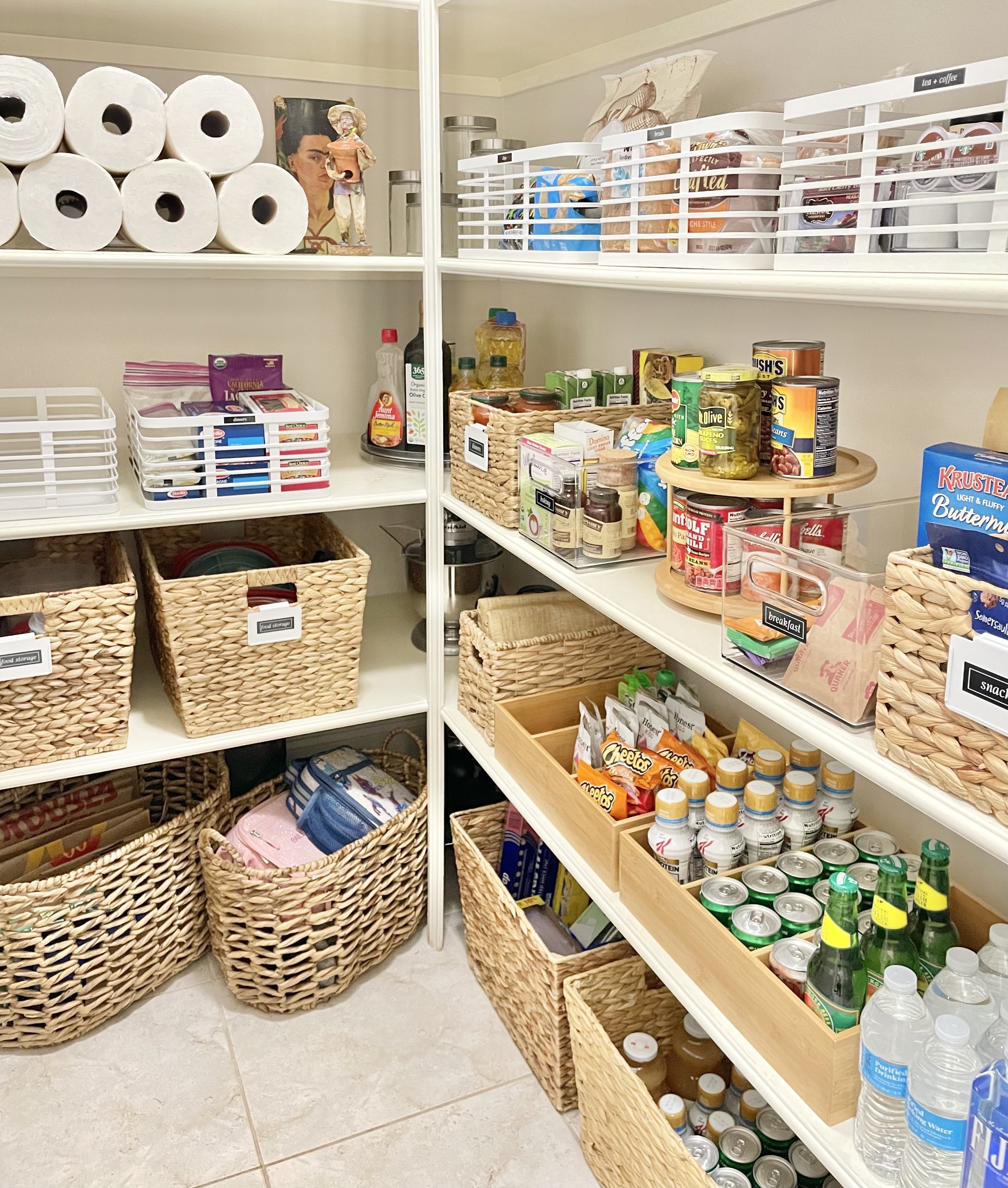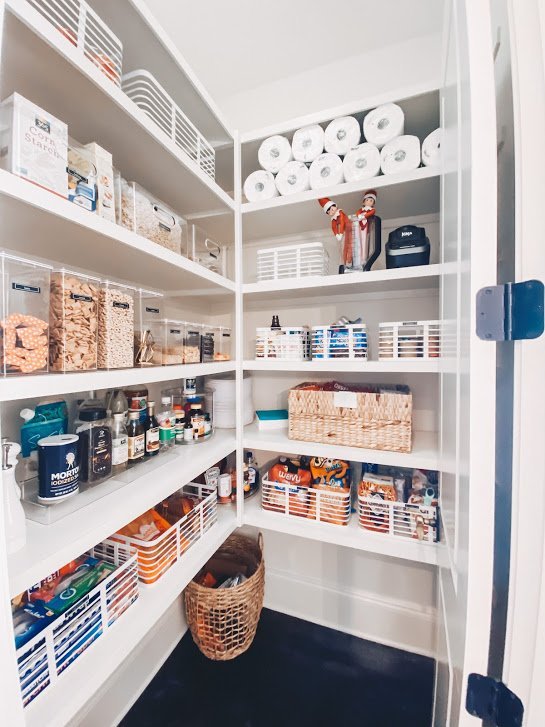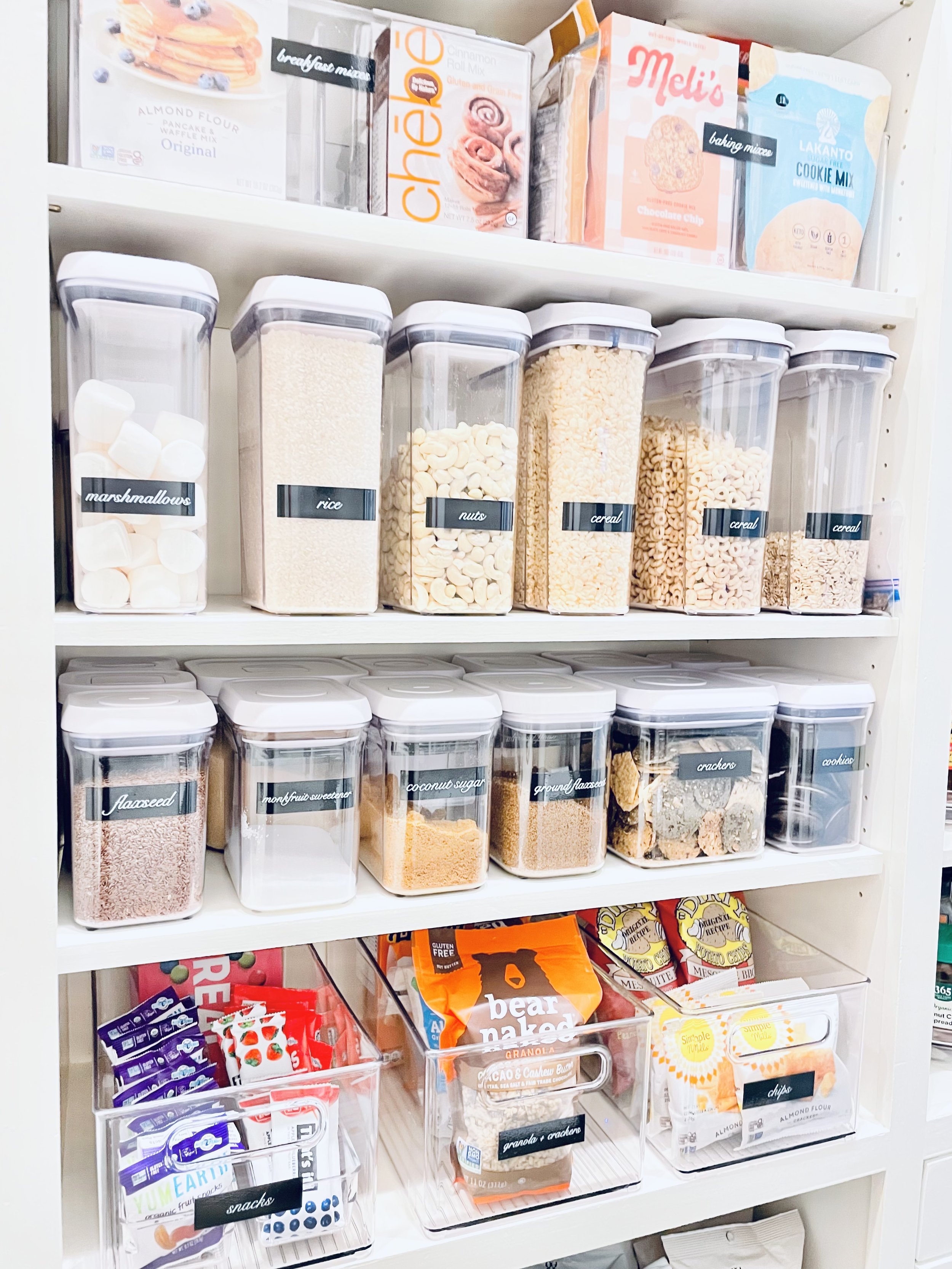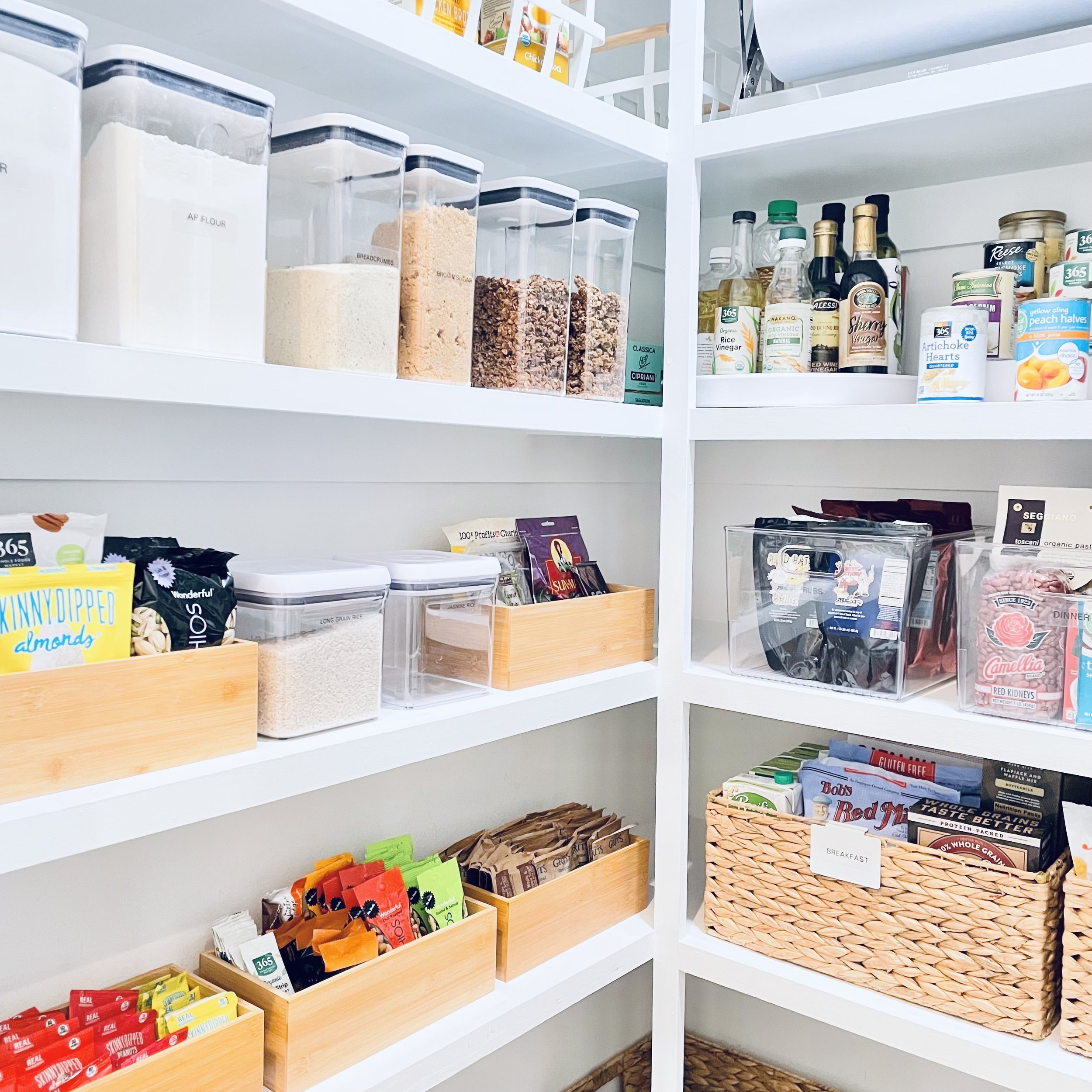Pantry Organization 101
Ah, the pantry…the place where breakfast basics, lunch essentials, and dinner preps reside, the place where children run to grab their afternoon snacks, and the place that stores other frequently used items like supplements or dry produce. It’s a very reliable place to store most of our daily consumables, and as such, it’s visited often by every member of the family. Pantries vary in a bevy of styles, from built-in or free-standing cabinets, to reach-in closet varieties, to full walk-in rooms with shelves lining the walls. Whatever pantry you have, it is important that they be kept functional and everything in it be clearly visible for ease of use. Personally, it’s a favorite of mine (and the crew at Sorted) to organize this part of the house because of how items are so exceptionally showcased, inviting all to come and use it. Follow along on how to create a similar look in yours.
1. Sort and Categorize
The first step is to take everything out and sort items into similar categories. Yes, it will get messy, but this is the only way to see what you have. Enlist the help of a friend or family member for this step. After everything is out of the pantry, now would be a great opportunity to give the shelves a thorough cleaning. Avoid at this time from making purchases of bins, containers, and other supplies before actually seeing what is going to be left in your space. This will waste your time and money. Save this step for later!
2. Edit and Purge
Once everything is in their respective categories, it will be easy to see how many you have of each item. Decide what to keep, donate, or toss. Look at the condition of your items. If you haven't used it in a while, will you use it in the near future? Are any of the items expired? A good tip to remember is that usually local food banks will accept unopened, expired foods, as long as they are in good condition. Sometimes circumstances occur that render items unfavorable, such as the case when becoming pregnant and no longer being able to enjoy certain foods or libations, or your child becoming fully weaned off formula or baby food to initiate eating solid foods. Decide whether those items will remain or stay in the pantry.
3. Organize, Containerize, and Label
After you see what is staying in the space, create a plan, purchase any needed supplies, and then organize and label the space. Take an inventory of what is left and decide on solutions for the final destination of those items. Make sure you measure your space to accommodate any bins, baskets, or containers you intend to fit in those areas. Take note of accessibility and where it makes the most sense to store items. Contain all similar items and create zones. For some items like breakfast cereals, grains like rice and legumes, and baking elements like flours or sugars, it may be better to decant them into clear airtight containers, not only to keep them fresher longer, but also to be able to see what you have at a glance, as a function of necessity, as well as one of visual aesthetics. Label the bins, baskets, or containers to let you and others know what is in them currently, and when it has been exhausted and warrants replenishing. After you have finished organizing and labeling your pantry, determine if all items are within easy reach for everyone or if a step stool or ladder is necessary.
As you organize, keep in mind what storage organizers work well with which pantry items, when to take heed of position in terms of safety, and where to arrange based on space or necessity.
Concerning storage organizers, we recommend the following for use in your pantry. Turntables are great to use with items such as cans, oils, protein powders, sauces, spreads, and supplements, lending an advantage by maximizing display area in minimal space or corners. Also consider an Elfa system, the mountable over-the-door organizer, when more space is needed. Its shelves come in different widths and depths to accommodate many different items, especially snacks that come in all sorts of shapes and sizes. Can risers, as its namesake suggests, are built for easy viewing of canned goods, but also work well with bottled medications, supplements, and vitamins. Acrylic pantry bins or woven baskets act as drawers on shelves for baking mixes, boxed goods, and dry grains. Large bins and baskets do well on the floor for back stock or large bags of chips.
Safety should be a priority when storing or retrieving items in the pantry. Refrain from storing liquids in baskets; cleanup should be easy if ever a spill happens, to prevent accidents or mishaps. Large or wide-mouthed items like baskets, multiple items that can become cumbersome and heavy like canned beverages, and large dog food bags or bins should be stored closer to the bottom shelves or the floor. The weight of an item should always be considered when determining where it is placed. Is it safe to grab? Is it easy to remove?
Arrange items in the pantry based on whether you have enough space to store them or how complementary they are to each other. Depending on the size of your pantry, you may have room for appliances like blenders or slow cookers, entertainment dinnerware and decor, and paper goods like plates and napkins. The occasional pantry may have cleaning products, but we prefer these to be placed underneath the sink cabinet or laundry room. For dry produce such as potatoes and onions, store them separately due to each releasing gasses that will hasten spoilage onto the other. Besides your pantry items, think of how suited your organizers are sitting next to one another. Function is always first, but try to make it look good! Strive for organizers and color schemes to be consistent or harmonizing. We love to mix acrylic bins with a combination of white and bamboo-colored organizers or baskets.
To give you an idea of what organizers we use, here is a list of our favorite organizational products, and why we love them.
acrylic bin – a plethora of sizes and styles to accommodate every possible item; multiples sit exceptionally well when aligned on shelves in a synchronous fashion
bin clip – labeling made easy for baskets; easy to remove for relabeling
can riser – a two-part shelving unit that is adjustable to the length of any shelf; strong and sturdy enough to hold and display heavy items; graduated shelving allows access of items from the back as easy as it is from the front
label machine – an organizing necessity to recognize contents of containers; easily produce labels in different sizes, color backgrounds, and font styles to suit personal preference
OXO container– airtight lids keep items fresh; wide-mouthed containers make for easy pouring or measuring out contents; built for optional modular stacking to be spaced efficiently
turntable – items come within eyeshot from one touch of a swivel; makes full use of corners or high shelves (when necessary to store items away from children but still easily accessible to adults); stable enough to secure tall or heavy items within reach
woven basket – great for use on the floor for back stock or large items; provides soft, textural contrast when paired with opaque or clear containers for a visually appealing pantry
4. Establish Routines and Systems
After everything is in place, set up routines and systems to maintain the organization and discuss this with your family. Let everyone know where items go based on your system of category, bulk items, backstock, etc. Have everyone participate in the routine of storage and replenishing. For example, when unloading groceries, remove items from bulk packaging and place in their designated area. Or, if someone uses the last of the item in the OXO container, replenish immediately with the same item. Knowing these systems and following these routines will lead to a clutter-free and tidy pantry that will benefit all who use it. And remember, if the pantry needs a touch-up, take the time to reset your space at the end of each day.
Pantries serve their purpose by storing those items we use in our everyday lives as grab-and-go or as part of making a memorable meal with others. Taking the time to sift through what should stay, organizing with careful consideration on the fundamentals, as well as making it look enjoyable when peering and perusing will keep you and everyone else perpetually satisfied when stepping into your pantry, now and everyday thereafter.




